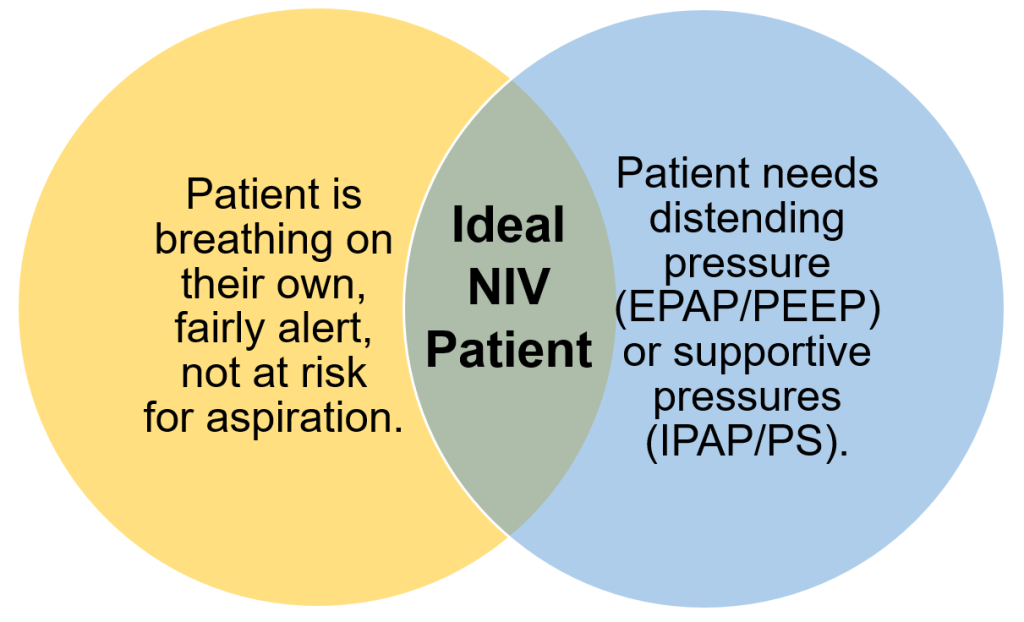4.6 The Ideal Non-Invasive Ventilation Patient
The most important step to initiating BiPAP or CPAP is in identifying the ideal patient population, and the reason NIV is being initiated.
NIV is not equal to invasive mechanical ventilation. NIV has its own distinct ideal patient population. Similar to spontaneous modes of ventilation, all patients need to be breathing on their own. They must also be alert enough to protect their own airway and not be at risk for aspiration.
Other than these baseline requirements, the ideal non-invasive patient can be selected based on the previously mentioned “indications for NIV”. Patients who would be ideal candidates either need additional pressures applied to help:
- recruit alveoli and/or improve oxygenation, or
- augment their own breathing noticed through elevated CO2 or increased work of breathing.
To simplify it even further, they need either distending pressure (EPAP/PEEP) or they need supportive pressures (IPAP/PS).

Identifying the reason that NIV is going to be used will benefit your patient in two ways. It will
- aid the practitioner in knowing whether NIV will be successful, and
- drive the settings chosen when setting a patient up on NIV.
“The Ideal Non-Invasive Ventilation Patient” from Basic Principles of Mechanical Ventilation by Melody Bishop, © Sault College is licensed under a Creative Commons Attribution-NonCommercial-ShareAlike 4.0 International License, except where otherwise noted.

